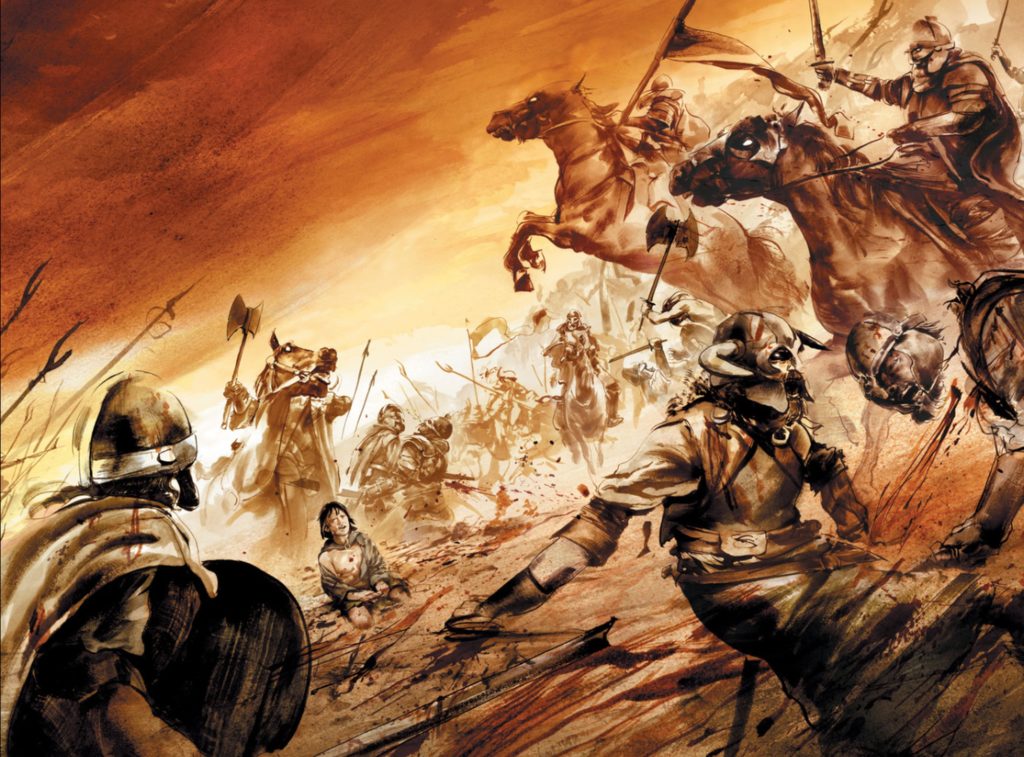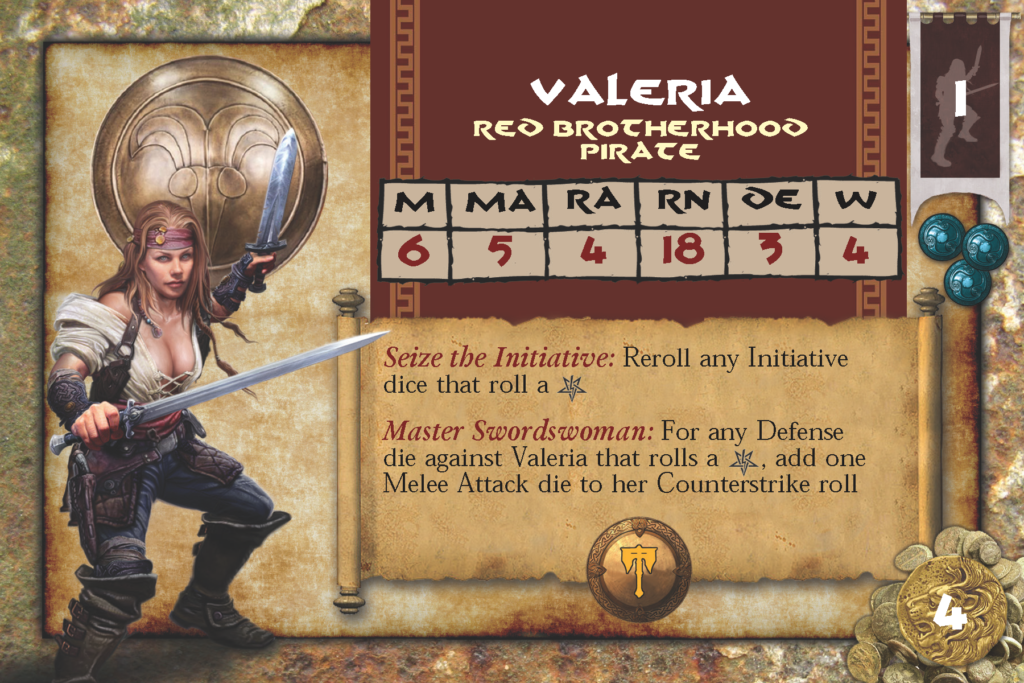19 Sep CROM Mechanics Teaser #4 – Melee!
The main course of any wargame! Melee is what happens once you’ve done all your maneuvering and now you’re in the thick of it. But CROM has a few things that keep melee combat fun and less of a slog.

The Basics
Once units are in base-to-base contact, they have only two options: attack or run. If the unit wishes to leave the melee, the entire unit needs to be able to make a full run move. If that is not possible, the unit cannot flee.
If a unit is attacking, it must first use any available movement to make sure as many models as possible are in contact with the enemy unit. Then, all models in contact roll their attack dice. This is then resolved according to the Damage rules.
However, before models are removed, the opposing unit gets a Counterstrike attack of its own. Once this is also resolved, models are removed from both units starting with the farthest away from the center of combat.
Complications
A lot of the complications arise in maneuvering to optimal positioning: Bonus dice are awarded for each friendly figure from another unit in contact with the enemy unit, so it really pays to pile on against a foe. Along the same lines, every foe in contact gets to counter-attack, even if they weren’t directly attacked during the action. Monsters have big enough bases that multiple groups of warriors may engage them…but heroes have regular bases and so it’s tougher to get more figures in contact with them.
Other complications have to do with timing and making sure to only be in melee when you want. Powerful ranged attacks and special actions are denied once a unit gets caught in melee. Also, since counter-attacks can be brutal, it pays to delay activating a unit in melee until support arrives, otherwise it’s forced to flee or make a disadvantageous attack. The Counterstrike is simultaneous, so even a heavily punished unit might bring some or all if its attackers with it!
Of course, several units have special abilities that activate during melee attacks:
- Gunderland Pikemen add an extra defense die against any melee attack thanks to their reach weapons.
- The Devil from the Outer Dark subtracts a die from any Counterstrikes for each sigil it rolls on attacks.
- Valeria’s Master Swordswoman ability makes her Counterstrike stronger: for each sigil she rolls on defense against melee she adds an extra attack die when she hits back!
- The vampire Avikasha heals lost Wounds when she rolls sigils on a melee attack.

And of course, there are a number of Fate Cards that change these rules significantly for a well-timed tactical boost. For instance, the “First Strike” Fate Card forces the foe to suffer the Wounds from an attack before the Counterstrike is rolled. (Note that this does not prevent any still-standing model from making a Counterstrike, but it does mean there may be fewer models left in contact if the attack is particularly effective.)
Come back next time when we will discuss the slightly-less-brave ranged combat rules.




